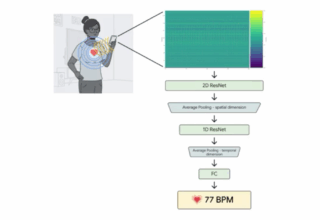
Since the very beginnings of the Civil Rights Act of 1964, a great deal of emphasis was placed on outlawing discrimination based on “race, color, religion, sex, or national origin.” While you may be wondering exactly what this has to do with the increasing role of technology in health law and health care law degree programs, it has much to do with analyzing metrics that is only made possible through technology. The quickest, and by some standards, only way to track ethnic groups and demographics within a population is through computer technology and when it comes to healthcare law, this is the most important step in our system of checks and balances.
However, civil rights is only one component of the metrics tracked by technology and over time, the role of technology continues to expand due to further laws enacted along the way. If you are interested in furthering your career by studying for a healthcare law degree online, you can find the information on a health law and policy degree here. In the meantime, let’s look at other ways in which the role of technology is becoming a vital component of healthcare and health care law.
In the Beginning was the EMR
Because computers have been an integral part of our lives for more than half a century now, it was quickly understood that Electronic Medical Records, or EMRs as they are more commonly referred to, offered a way to easily access a patient’s medical history, their current diagnosis or diagnoses. Digital records provided a way for healthcare providers to quickly access what they needed in a patient’s chart without flipping through pages and pages of a file to find the information they were looking for. To put it simply, with a search function, doctors could quickly find what they needed, thus enabling them to move much more quickly from patient to patient. Also, it played nicely along with the Paperwork Reduction Act of 1995.
The Evolution of the EHR
Along the way it was determined that an EHR, Electronic Health Record, was much more inclusive than an EMR. The difference? Medical implies only clinical observations and treatments whereas an EHR provides so much more information on the patient and can be easily shared between providers and agencies that can access the EHR system. For example, an EHR is designed to quickly be shared between a healthcare provider, the insurance company, a hospital and even a pharmacy. Much of this information is vital in determining a patient outcome, as well as in helping to track metrics for legal purposes and within the confines of the law, which by the way, issued a deadline for implementation of electronic records that carried a consequence if not met.
This brings us to one very important issue with the use of either an EMR or an EHR and that is the concern over whether or not a patient’s personal information can be intercepted, that is to say hacked. Most systems have layer upon layer of security in keeping HIPAA that was designed to keep all records and information confidential. This is a significant portion of a health law program and one that will seek to show how technology can continue to play a huge role in healthcare while being compliant with all these laws.
The way of the future in healthcare is technology but unless it is kept within legal parameters, serious issues could result. Looking for a career in healthcare? Why not get a masters in health law and policy? It is career with a future and one that is vital in an increasingly technological industry.



















